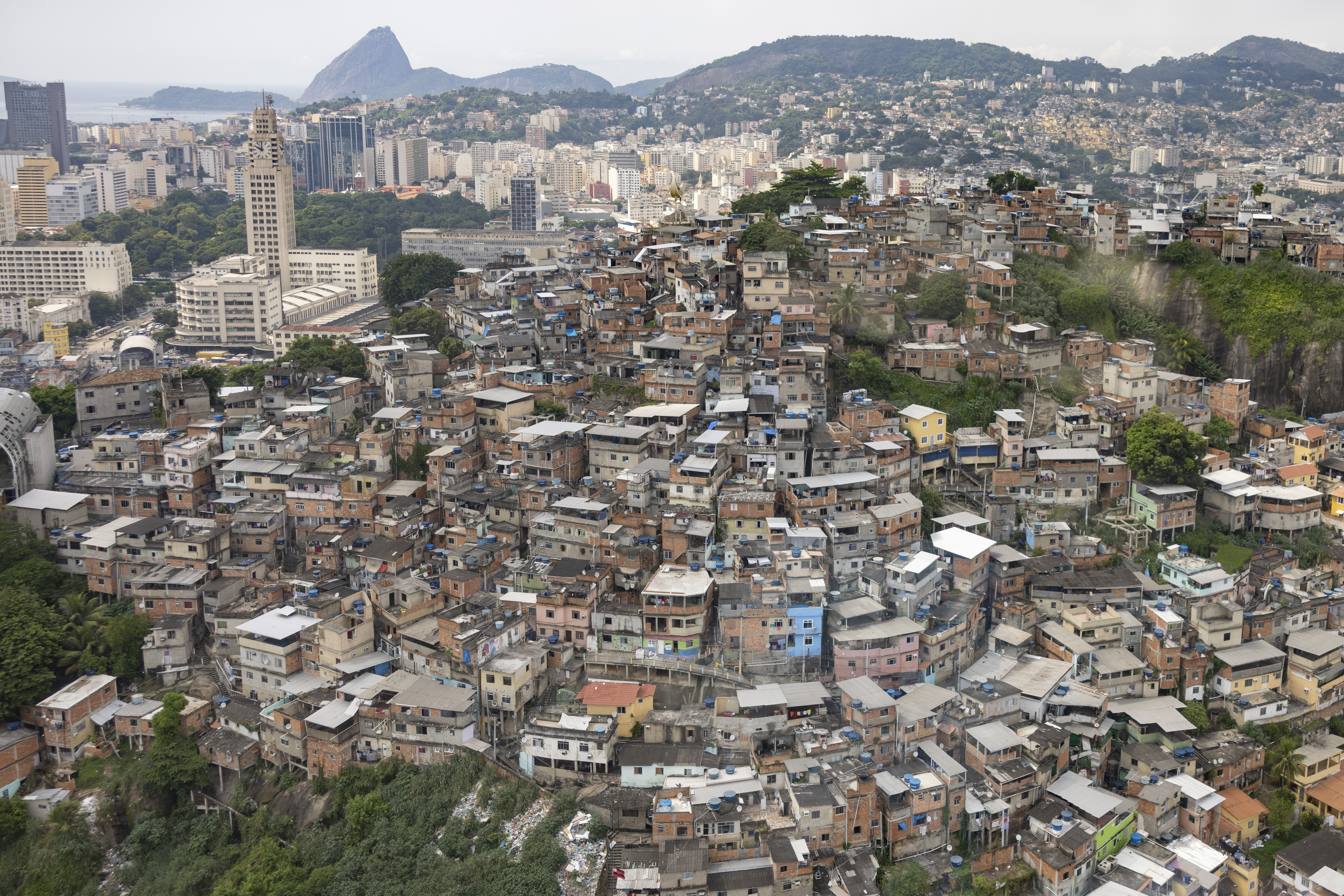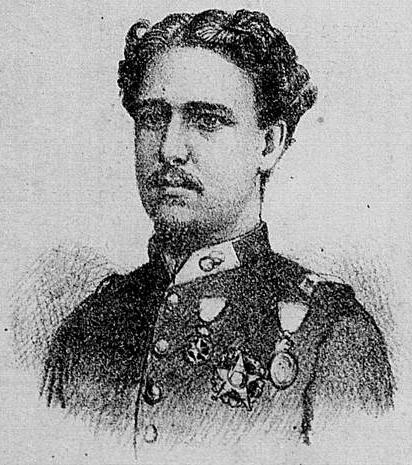|
Francisco Pereira Passos
Francisco Franco Pereira Passos (29 August 1836 – 12 March 1913) was a Brazilian engineer and politician. He was mayor of the Federal District of Brazil from 1902 to 1906, nominated by President Rodrigues Alves. During his tenure, Pereira Passos promoted a large-scale urban renewal plan for Rio, inspired by Georges-Eugène Haussmann's renewal of Paris. Biography Passos was son of Antônio Pereira Passos, Barão de Mangaratiba, and Clara Oliveira. Until the age of fourteen he was raised at the Bálsamo Farm, in São João Marcos, currently Rio Claro district, in the state of Rio de Janeiro. In March 1852 he joined the then Military School, now the Polytechnic School of the Federal University of Rio de Janeiro - former University of Brazil where he graduated in 1856 as a Bachelor in Physical and Mathematical Sciences, which gave him the Diploma of Civil Engineer. He was a classmate of Benjamin Constant. He studied in France from 1857 to the end of 1860, where he attended the ... [...More Info...] [...Related Items...] OR: [Wikipedia] [Google] [Baidu] |
List Of Mayors Of Rio De Janeiro
This is a list of mayors of Rio de Janeiro. History The city of Rio de Janeiro was founded in 1565. It was the seat of the Crown captaincy of Rio de Janeiro, a district of colonial Brazil under Portuguese rule. In 1763 Rio de Janeiro city became the capital of the colony, then named ''State of Brazil''. In 1815 Brazil became a kingdom within the United Kingdom of Portugal, Brazil and the Algarves; the captaincy of Rio de Janeiro became the province of Rio de Janeiro, within the Kingdom of Brazil, and the city of Rio de Janeiro continued to be the capital of both the Kingdom and the Province. Also, the Portuguese Court had moved to Rio in 1808, so that, even before the creation of the United Kingdom, the city was the de facto capital of the whole Portuguese Empire. In 1821 the Royal Court returned to Portugal, and in 1822 Brazil proclaimed its independence, with the establishment of the Empire of Brazil. The city of Rio de Janeiro was the Empire's capital, and, until 1834, it also ... [...More Info...] [...Related Items...] OR: [Wikipedia] [Google] [Baidu] |
Corcovado Rack Railway
The Corcovado Rack Railway ( pt, Trem do Corcovado) is a mountain rack railway in Rio de Janeiro, Brazil, from Cosme Velho to the summit of Corcovado at an elevation of . The summit is famous for its giant statue of '' Christ the Redeemer'' and for its views over the city and beaches. History The railway was opened by Emperor Dom Pedro II of Brazil on 9 October 1884. Initially hauled by steam locomotives, the line was electrified in 1910, a first in Brazil. It was re-equipped in 1980 with trains built by Swiss Locomotive and Machine Works (SLM) of Winterthur, Switzerland, and these were in turn replaced in 2019 by vehicles from SLM's successor company Stadler Rail. The line has been ridden by many famous people, including Pope Pius XII, Pope John Paul II, Alberto Santos-Dumont, Albert Einstein and Diana, Princess of Wales. Route and operation The line is long and has four stations total. The termini are the historic base station in Cosme Velho and the summit of Corco ... [...More Info...] [...Related Items...] OR: [Wikipedia] [Google] [Baidu] |
1913 Deaths
Events January * January 5 – First Balkan War: Battle of Lemnos – Greek admiral Pavlos Kountouriotis forces the Turkish fleet to retreat to its base within the Dardanelles, from which it will not venture for the rest of the war. * January 13 – Edward Carson founds the (first) Ulster Volunteer Force, by unifying several existing loyalist militias to resist home rule for Ireland. * January 23 – 1913 Ottoman coup d'état: Ismail Enver comes to power. * January – Stalin (whose first article using this name is published this month) travels to Vienna to carry out research. Until he leaves on February 16 the city is home simultaneously to him, Hitler, Trotsky and Tito alongside Berg, Freud and Jung and Ludwig and Paul Wittgenstein. February * February 1 – New York City's Grand Central Terminal, having been rebuilt, reopens as the world's largest railroad station. * February 3 – The 16th Amendment to the United States ... [...More Info...] [...Related Items...] OR: [Wikipedia] [Google] [Baidu] |
1836 Births
Events January–March * January 1 – Queen Maria II of Portugal marries Prince Ferdinand Augustus Francis Anthony of Saxe-Coburg-Gotha. * January 5 – Davy Crockett arrives in Texas. * January 12 ** , with Charles Darwin on board, reaches Sydney. ** Will County, Illinois, is formed. * February 8 – London and Greenwich Railway opens its first section, the first railway in London, England. * February 16 – A fire at the Lahaman Theatre in Saint Petersburg kills 126 people."Fires, Great", in ''The Insurance Cyclopeadia: Being an Historical Treasury of Events and Circumstances Connected with the Origin and Progress of Insurance'', Cornelius Walford, ed. (C. and E. Layton, 1876) p76 * February 23 – Texas Revolution: The Battle of the Alamo begins, with an American settler army surrounded by the Mexican Army, under Santa Anna. * February 25 – Samuel Colt receives a United States patent for the Colt revolver, the first revolving barrel multishot firearm. * Marc ... [...More Info...] [...Related Items...] OR: [Wikipedia] [Google] [Baidu] |
Morro Da Providência
Morro da Providência ("Providence Hill") is a favela located between the two Rio de Janeiro districts of Santo Cristo and Gamboa. It has an altitude of 115 metres and is located in the port area of the city (currently the subject of a major revitalization known as the Porto Maravilha).' It is widely considered to be the first favela community in Brazil."The granite hump of Providencia gazes down like a stern guardian on the old port of Rio de Janeiro. It offers probably the finest viewpoint over any city I know." History In 1897, victorious veterans of the Canudos War who were promised land in the old capital upon their return found that such promises were not kept. In frustration and desperation, the soldiers invaded the hill scrub land close to the (then) Ministry of War. The hill was initially named ''Morro da Favela'' after the favela plant, a skin-irritating bush belonging to the spurge family, which is indigenous to the region where the soldiers fought against the Canud ... [...More Info...] [...Related Items...] OR: [Wikipedia] [Google] [Baidu] |
Favela
Favela () is an umbrella name for several types of working-class neighborhoods in Brazil. The term was first used in the Providência neighborhood in the center of Rio de Janeiro in the late 19th century, which was built by soldiers who had lived under the favela trees in Bahia and had nowhere to live following the Canudos War. Some of the first settlements were called ''bairros africanos'' (African neighborhoods). Over the years, many former enslaved Africans moved in. Even before the first favela came into being, poor citizens were pushed away from the city and forced to live in the far suburbs. Most modern favelas appeared in the 1970s due to rural exodus, when many people left rural areas of Brazil and moved to cities. Unable to find places to live, many people found themselves in favelas. Census data released in December 2011 by the Brazilian Institute of Geography and Statistics (IBGE) showed that in 2010, about 6 percent of the Brazilian population lived in favela ... [...More Info...] [...Related Items...] OR: [Wikipedia] [Google] [Baidu] |
Theatro Municipal (Rio De Janeiro)
The Theatro Municipal ("Municipal Theater") is an opera house in the Centro district of Rio de Janeiro, Brazil. Built in the early twentieth century, it is considered to be one of the most beautiful and important theaters in the country. The building is designed in an eclectic style, inspired by the Paris Opéra of Charles Garnier. The outside walls are inscribed with the names of classic European and Brazilian artists. It is located near the National Library and the National Fine Arts Museum, overlooking the spacious Cinelândia square. History In the second half of nineteenth century, theatrical activity was very intense in Rio de Janeiro, then capital of the country. Still, its two theaters, the Lyric and St. Peter, were criticized for their facilities, either by the public or by the companies that worked in them. After the Proclamation of the Republic (1889), in 1894 playwright Artur Azevedo launched a campaign for the building of a new theater to host a local compa ... [...More Info...] [...Related Items...] OR: [Wikipedia] [Google] [Baidu] |
Avenida Atlântica
Avenida Atlântica (Portuguese for ''Atlantic Avenue'') is a major seaside avenue in Rio de Janeiro, Brazil. It is 4 kilometers long, and spans the entire length of the neighbourhoods of Copacabana and Leme. Layout In the stretch between its extremity in Leme and its crossing with Princesa Isabel Avenue (about 800 meters long), Avenida Atlântica has two car lanes in each direction, and from there to its Copacabana extremity, it has three lanes. It also has a portuguese pavement promenade with a wave pattern, as well as a bicycle lane between the promenade from the car lanes. There is a military base at each of the two extremities of the avenue: Forte de Copacabana in Copacabana, and Forte Duque de Caxias in Leme. Both are owned and administered by the Brazilian army. Buildings Avenida Atlântica is lined with residential buildings, restaurants, hotels (including the Copacabana Palace) and a few shops. Most buildings in the avenue have 11 floors, and were built with n ... [...More Info...] [...Related Items...] OR: [Wikipedia] [Google] [Baidu] |
Avenida Rio Branco
Rio Branco Avenue (), formerly Avenida Central, is a major road in downtown Rio de Janeiro. It was built as the leading brand of the urban reform carried out by the mayor Pereira Passos in early 20th century. It is one of the main thoroughfares of the city, being the scene of many important events. History The Rio de Janeiro of the early years of Republic still retained much of its colonial urban grid, which by now seemed outdated and anachronistic. Moreover, the old colonial center of town was overcrowded and prone to diseases such as yellow fever and smallpox. Out of this context came the opening of Central Avenue, part of a major modernization program in Rio de Janeiro following European urban planning and health policies. The engineer Francisco Pereira Passos was responsible for the reforms, appointed mayor of Rio de Janeiro ( Distrito Federal) by President Rodrigues Alves in 1902. The works commenced in March 1904 with the demolition of 641 homes, displacing nearly 3,900 pe ... [...More Info...] [...Related Items...] OR: [Wikipedia] [Google] [Baidu] |
Cortiço
Cortiço (, , ), or gueto ( Portuguese language for "beehive" and " ghetto" respectively; tenements), is a common Portuguese term used in Brazil and Portugal for an area of concentrated, high density urban housing where people live with poor sanitation and hygiene conditions. Cortiço houses are typically divided into small rooms that are rented. Cortiços exist in large cities such as São Paulo, Salvador, Rio de Janeiro, and Recife. They originated in São Paulo, Brazil, during the late 1700s, and continue to exist in contemporary times in Rio de Janeiro and São Paulo. Less common today, most cortiços are old buildings in the central, older parts of the cities. Overview Cortiços are typically large houses with interiors that have been divided into very small rooms for rent, typically with very little or no privacy. Cortiço residents are typically families who share a single room, with access to a shared bathroom and shared kitchen. Some units have a bathroom and/or kitch ... [...More Info...] [...Related Items...] OR: [Wikipedia] [Google] [Baidu] |
Alfredo D'Escragnolle Taunay, Viscount Of Taunay
Alfredo Maria Adriano d'Escragnolle Taunay, Viscount of Taunay (February 22, 1843 – January 25, 1899), was a Brazilian writer, musician, professor, military engineer, historian, politician, sociologist and nobleman. He is famous for the regionalist novel , considered a major forerunner of naturalism in Brazil, and for ''A Retirada da Laguna'' (1874; originally written in 1872 in French as ''Le retraite de Laguna''), an account of an episode in the Paraguayan War. The Brazilianist Leslie Bethell has described it as "the one undoubted literary masterpiece produced by the Paraguayan War".Bethell, Leslie, ''The Paraguayan War (1864-1870'', Institute of Latin American Studies, 1996, p.6/ref> He founded and occupied the 13th chair of the Academia Brasileira de Letras, Brazilian Academy of Letters from 1897 until his death in 1899. Life Taunay was born in Rio de Janeiro, in 1843. His father was Félix Taunay, Baron of Taunay, a painter, professor and headmaster of the Escola ... [...More Info...] [...Related Items...] OR: [Wikipedia] [Google] [Baidu] |
Curitiba
Curitiba () is the capital and largest city in the state of Paraná in Brazil. The city's population was 1,948,626 , making it the eighth most populous city in Brazil and the largest in Brazil's South Region. The Curitiba Metropolitan area comprises 26 municipalities with a total population of over 3.2 million ( IBGE estimate in 2010), making it the seventh most populous metropolitan area in the country. The city sits on a plateau at above sea level. It is located west of the seaport of Paranaguá and is served by the Afonso Pena International and Bacacheri airports. Curitiba is an important cultural, political, and economic center in Latin America and hosts the Federal University of Paraná, established in 1912. In the 1700s, Curitiba's favorable location between cattle-breeding countryside and marketplaces led to a successful cattle trade and the city's first major expansion. Later, between 1850 and 1950, it grew due to logging and agricultural expansion in Pa ... [...More Info...] [...Related Items...] OR: [Wikipedia] [Google] [Baidu] |




.jpg)


